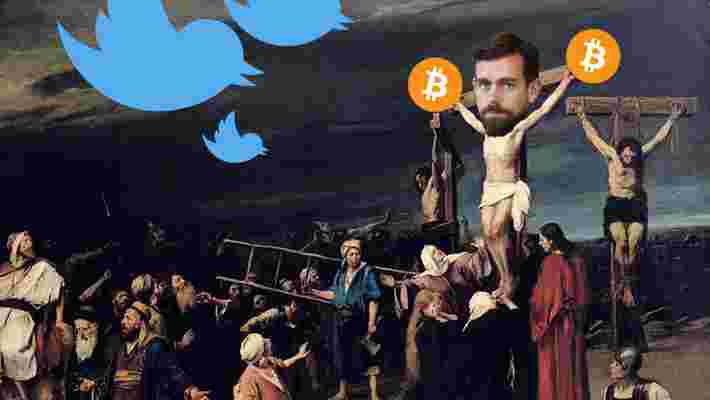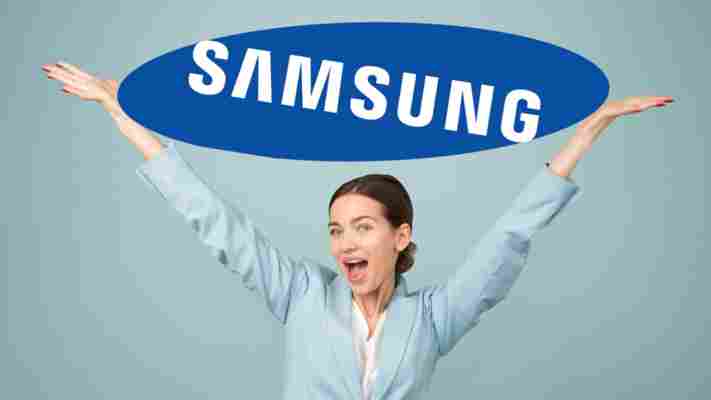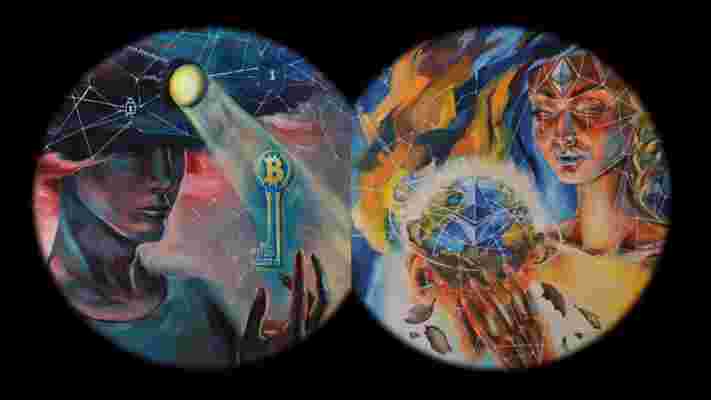Blockchain has a new unexpected hero: Twitter‘s Jack Dorsey.

Although up until recently the cryptocurrency community would routinely grill Dorsey over Twitter‘s notorious Bitcoin giveaway scam epidemic , the micro-blogging service’s chief has found a new fandom among staunch Bitcoin supporters; and it all began on the Joe Rogan’s podcast, The Joe Rogan Experience.
Following a heated backlash from free speech activists, Dorsey embarked on an unusual podcast media run to discuss Twitter‘s code of conduct, its policies on censorship, how those rules are enforced, and how the platform aims to tackle content policing in the future. But all of these matters were overshadowed when Dorsey revealed fascination with decentralized tech and Bitcoin.
“I believe the internet will have native currency.” Dorsey told Rogan. “I don’t know if it’s Bitcoin, [but] I think it will be given all the tests it’s been through, the principles behind it, and how it was created.”
“[Bitcoin] is something that was born on the internet, that was developed on the internet, that was tested on the internet,” he continued, “it is of the internet.”
Just like that, Dorsey became the talk of the (blockchain) town. Indeed, his remarks on Bitcoin swiftly flooded pretty much every blockchain discussion on Twitter – and similarly, cryptocurrency media loudly celebrated Dorsey’s endorsement of decentralized tech.
Unlike stereotypical “blockchain influencers” (blockchainfluencers?) selling unrealistically overhyped visions of the technology, Dorsey surfaced as someone genuinely interested in what Bitcoin and cryptocurrencies can do for the regular internet user right now.
Not only that, Dorsey had already put his money where his mouth is by enabling Bitcoin purchasing on Square’s Cash App (where he also acts as a CEO) in early 2018 .
“The reason we enabled the purchasing of Bitcoin within the Cash App is [because] we wanted to learn about the technology,” he said on The Joe Rogan Experience.
“We wanted to put ourselves out there and take some risk,” he continued. “We’re the first publicly traded company to actually offer [Bitcoin purchasing] as a service, we’re the first publicly traded company to talk to the [US Security and Exchanges Commission (SEC)] about Bitcoin and what that means.”
It also seems Dorsey had even bigger plans for Bitcoin and cryptocurrencies though. “We would love to see something become a global currency,” Dorsey continued. “It enables more access, it allows us to serve more people, it allows to move much faster around the world.”
Jack Dorsey: Blockchain’s new torchbearer
Perhaps in an effort to shine even more spotlight on the technology, blockchain and cryptocurrency enthusiasts wasted no time seeking further validation from their newfound leader.
After his appearance at The Joe Rogan Experience, people flocked to Twitter to ask Dorsey about his views on cryptocurrencies other than Bitcoin and his plans to integrate morecoins into the ventures he oversees.
Among other things, the Twitter chief shot down any immediate intentions to expand Cash App’s cryptocurrency lineup with new additions, revealed he has no interest in hodling Ethereum (or any other coin for that matter ), and praised Bitcoin for its resilience and strong principles.
Oh, he also took a dig at Bitcoin‘s (BTC) eternal rival, Bitcoin Cash (BCH) – a badge of honor every BTC maximalist is proud to wear.
Still though, the moment when Dorsey truly became blockchain’s new torchbearer came when he – both figuratively and literally – took on the Lightning Torch , a new game-experiment powered by the Lightning Network that aims to raise awareness of cryptocurrency payments.
The experiment had already drawn the the attention of Bitcoin enthusiasts, but Lightning Labs CEO Elizabeth Stark told CoinDesk “the torch really went viral after Jack took it.”
“What I think was so powerful about the torch was that it showed how quickly Lightning enables you to send money, across the internet, anywhere around the world,” she added. “We’re doing to money what the internet did to information.”
More recently, Dorsey revealed the Lightning Network could soon make its way to Cash App too. “It’s not an ‘if,’ it’s more of a ‘when,’ and how do we make sure that we’re getting the speed that we need,” Dorsey said in a chat with Stark on the Stephan Livera podcast. “We don’t think it stops at buying and selling [Bitcoin]. We do want to help make happen the currency aspect.”
But despite all the admiration coming his way, not everyone in the blockchainverse was sold on Dorsey’s devotion to decentralized tech.
A true supporter… or a traitor in disguise?
Dorsey’s newfound popularity in the cryptocurrency world quickly attracted a slew of critics , questioning the motifs behind his support for Bitcoin and the Lightning Network.
For the record, Dorsey is an investor in Lightning Labs, the company developing the Lightning Network protocol.
His name was prominently featured in news headlines when Lightning Labs announced raising $2.5 million in seed funding to fix Bitcoin‘s transaction woes in March 2018.
In spite of getting flak over the possible conflict of interest, Dorsey’s vote of confidence to the Lightning Network doesn’t seem misplaced at all.
At a time when the decentralized app (dapp) market is mostly inactive (or used for questionable applications when active ), developers have continued to come up with fun, captivating use cases for the Lightning Network. As a reminder, at one point in time Lightning Network-based drawing board, Satoshi’s Place, had more active users than any dapp on the Ethereum network.
Say what you will, whether you’re vested in the Lightning Network or not – there are many reasons to be excited about it.
Blockchain: an industry without a clear direction in sight
Despite a bombastic surge in interest in late 2017 and early 2018, the blockchain sector has struggled to keep the attention of mainstream audiences and find adoption in the real world.
While corporations continue to boast about offering new blockchain-powered ( for-profit ) services and experimenting with blockchain for all sorts of ridiculous reasons , tech giants are still treading lightly when it comes to rolling out decentralized technology in their own services.
With this in mind, it’s no surprise that the blockchain and cryptocurrency communities have so readily embraced Dorsey’s support for Bitcoin.
But let’s face it: it will take a lot more than a few verbal endorsements to propel blockchain tech to real mainstream adoption – and even Dorsey might lack the influence and resources to do exactly that.
Ugh finally, Samsung adds support for Bitcoin in Blockchain KeyStore
It looks like Samsung has finally got its house in order after it added support for Bitcoin in its Blockchain KeyStore.

Despite the cries of mass adoption that would undoubtedly follow, Samsung decided to quietly add support for Bitcoin to its private key wallet that it calls its Blockchain KeyStore. The use of such keys is vital to many decentralized applications (dapps) as well as for storing keys to cryptocurrency.
Support is restricted to Samsung‘s S10 and Note10 devices including the Galaxy S10e, S10, S10+, S10 5G, Note10 and the Note10+. It’s also only available for customers in Canada, Germany, South Korea, Spain, Switzerland, the US, and the UK.
Samsung first revealed its KeyStore earlier this year . Naturally, some started to spread word that it would boost Bitcoin adoption . But many overlooked the simple fact that it didn’t support Bitcoin, until now.
Instead, Samsung‘s Blockchain KeyStore was only compatible with Ethereum, and at that, it only supported a handful of small-time ERC20 tokens that for the most part had little to no real world utility.
From a business perspective, it makes sense that Ethereum support was added first. By accepting ERC20 tokens, Samsung immediately opened its device to potential compatibility with thousands of Ethereum projects.
What’s more, earlier this year reports surfaced that Samsung was working on its own proprietary blockchain network . And you guessed it, it would be based on the Ethereum mainnet.
Bitcoin has nearly 70 percent of the cryptocurrency market by value, at the time of writing. Ethereum has less than eight percent. While supporting Ethereum might make business sense, I question if it was really in the interests of the consumer and the cryptocurrency market, speaking more broadly.
Whatever its motivations, at least Samsung didn’t keep us waiting too long before adding support for Bitcoin.
H/T – The Block
Meet the lawyer-turned-artist behind classical cryptocurrency paintings
Over the past 10 years cryptocurrency, blockchain, and art have become the most surprising and unlikely of bed fellows.

Street art, graffitti, and memes are quite common, but the words cryptocurrency and fine art rarely appear in the same sentence. But that’s changing as one artist is making these worlds collide to produce something as individually unique as a Bitcoin wallet private key.
Toronto-based fine artist – Nelly Baksht – is one of a growing community creating works specifically for the cryptocurrency and blockchain industry. But she hasn’t always been interested in the decentralized technology.
For Baksht her love of art comes first, but after spending time with friends she became fascinated by the political power of decentralization, blockchain, and cryptocurrency.


Her blockchain-themed pieces have been showcased at specialist conferences all over the world, including Malta’s Blockchain Summit and the Blockchain Futurist Conference . You may also have seen them pop-up on reddit from time to time.
But how does a classically trained artist find her way blending fine art with visions of cryptocurrency and blockchain? Hard Fork spoke to Baksht to find out more.
Art comes first
Despite having an interest in art from a young age, and undertaking an intensive eight-year long art program at the Youth Art School in her native Russia, Baksht went on to train and practice as a corporate lawyer for seven years in her homeland.
Baksht told Hard Fork: “My passion for art has always been with me. While working as a lawyer I started a university art program in Graphic Design and graduated in 2008,” she continued. “After I moved to Canada, I happened to get into community of very talented artists, and I decided to realize my dream and dedicate myself to fine art.”
It might seem surprising to some that cryptocurrency and art have come together so strongly, but to Baksht it seems quite natural.
“In the modern world, a syntheses/synergy of different human activities leads to creation of new industries and movements,” Baksht said. “This is how cryptoart appeared – [it’s an] art movement that combines technology and art.”
Indeed, we’ve seen Bitcoin hidden in a street mural , cryptocurrency themed posters , jewelry, and the French even held a “cryptoart” exhibition to celebrate 10 years of the decentralized currency.
Cryptocurrency through fine art
It’s a common rhetoric in the cryptocurrency community that Bitcoin will disrupt age-old financial methods, and blockchain will change the face of the world as we know it. To the anti-establishment crowd this might sound great, but the reality of change to an unknown is dangerous and scary for the rest of us.
Instead, Baksht aims to create bright and positive pieces that look towards the creation of a better world, rather than the destruction of the old by blending her traditional fine art skills with her own visions of modern technologies.
“I had a goal to create something that shows emerging technology in a very positive way, something more creative rather than destructive,” Baksht told Hard Fork. “I did not have a goal of creating a new style. But the blockchain world is very different from the traditional world. And I wanted to combine cutting-edge technology with traditional fine art techniques.”
Finding inspiration
As with a lot of creative processes though, these works don’t always paint themselves. Baksht told Hard Fork that it’s a different creative process every time. “ Sometimes it is a long process through a lot of thoughts about concept, then composition, many sketches, I can make many changes compared to initial idea.” She continued, “but sometimes I just get it instantly, and I can see the complete painting – no tweaks, no changes needed.”
Indeed, it might be easier to get a painting onto canvas than other times, but how does an artist with no prior knowledge or experience of blockchain or cryptocurrency find their way to painting commissioned pieces that have appeared at conventions and conferences all over the world?
Like many of us, Baksht got interested in blockchain because of her friends, lots of whom work in computing and information technology industries. It was just a matter of time before Baksht found her way to painting cryptocurrency-based art.
“Obviously sooner or later many of them started paying attention to evolving blockchain technology. So did I.”
That said, Baksht is hesitant to call her art “cryptocurrency-based,” rather she looks to the root of cryptocurrency: “cryptography.” Her work is not focussed on pandering to the memes and rhetorics of the industry, but exploring the societal implications of blockchain, technology, and decentralization through artistic expression.
“You may find many cryptoart works about crushing modern society and financial system,” she adds. “I would like my cryptoart works to deliver a different message – [the] idea of decentralization and blockchain technology have been given to people to change the entire world into a better place to live for all of us, it is about beauty genesis not scary apocalypsis.”
But with the currently stagnant market and interest in cryptocurrencies being much lower than it was a couple of years ago, I was interested to know if this has impacted Baksht and the cryptoart world. Interestingly enough, Baksht tells Hard Fork that she hasn’t been affected at all.
“Luckily, I don’t see any decrease in interest… I take the market fluctuations philosophically: I am an artist, not a trader, and my job is to create and inspire.”
Perhaps this is a lesson we all should heed, artist or not.
Baksht’s also supporting the cryptocurrency community by accepting payment in Ether and Bitcoin – and US dollars. The authenticity of original pieces is also verified on the Ethereum blockchain. What better way to declare your love for art and cryptocurrency.











